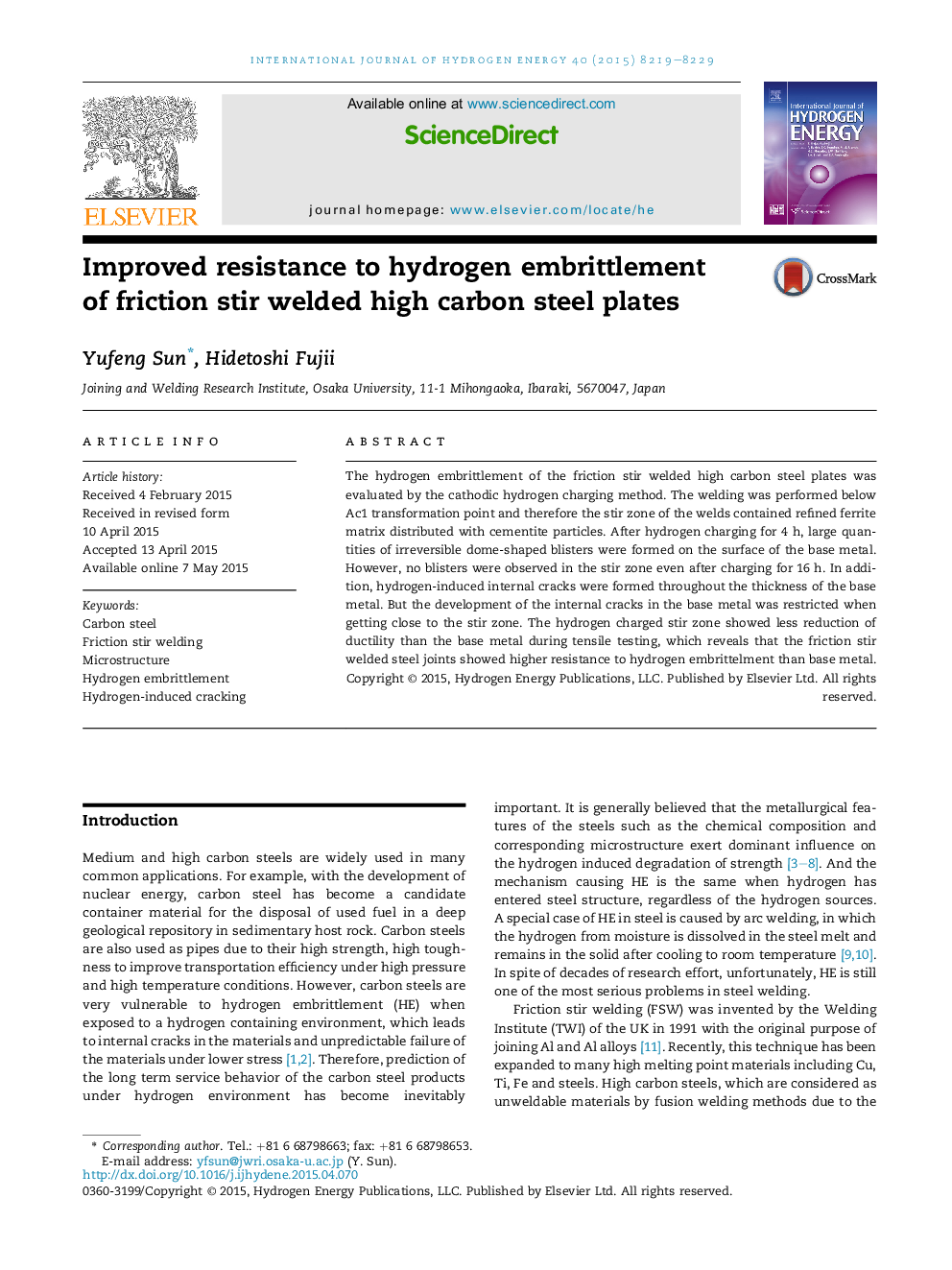| Article ID | Journal | Published Year | Pages | File Type |
|---|---|---|---|---|
| 1270816 | International Journal of Hydrogen Energy | 2015 | 11 Pages |
•SK4 High carbon steel was friction stir welded below Ac1 transformation point.•Hydrogen blisters and internal cracks formed in base metal after cathodic charging.•Hydrogen blisters and internal cracks were hardly observed in stir zone.•Development of hydrogen induced cracking was prohibited near stir zone boundary.•After charging for same time stir zone showed less ductility loss than base metal.
The hydrogen embrittlement of the friction stir welded high carbon steel plates was evaluated by the cathodic hydrogen charging method. The welding was performed below Ac1 transformation point and therefore the stir zone of the welds contained refined ferrite matrix distributed with cementite particles. After hydrogen charging for 4 h, large quantities of irreversible dome-shaped blisters were formed on the surface of the base metal. However, no blisters were observed in the stir zone even after charging for 16 h. In addition, hydrogen-induced internal cracks were formed throughout the thickness of the base metal. But the development of the internal cracks in the base metal was restricted when getting close to the stir zone. The hydrogen charged stir zone showed less reduction of ductility than the base metal during tensile testing, which reveals that the friction stir welded steel joints showed higher resistance to hydrogen embrittelment than base metal.
